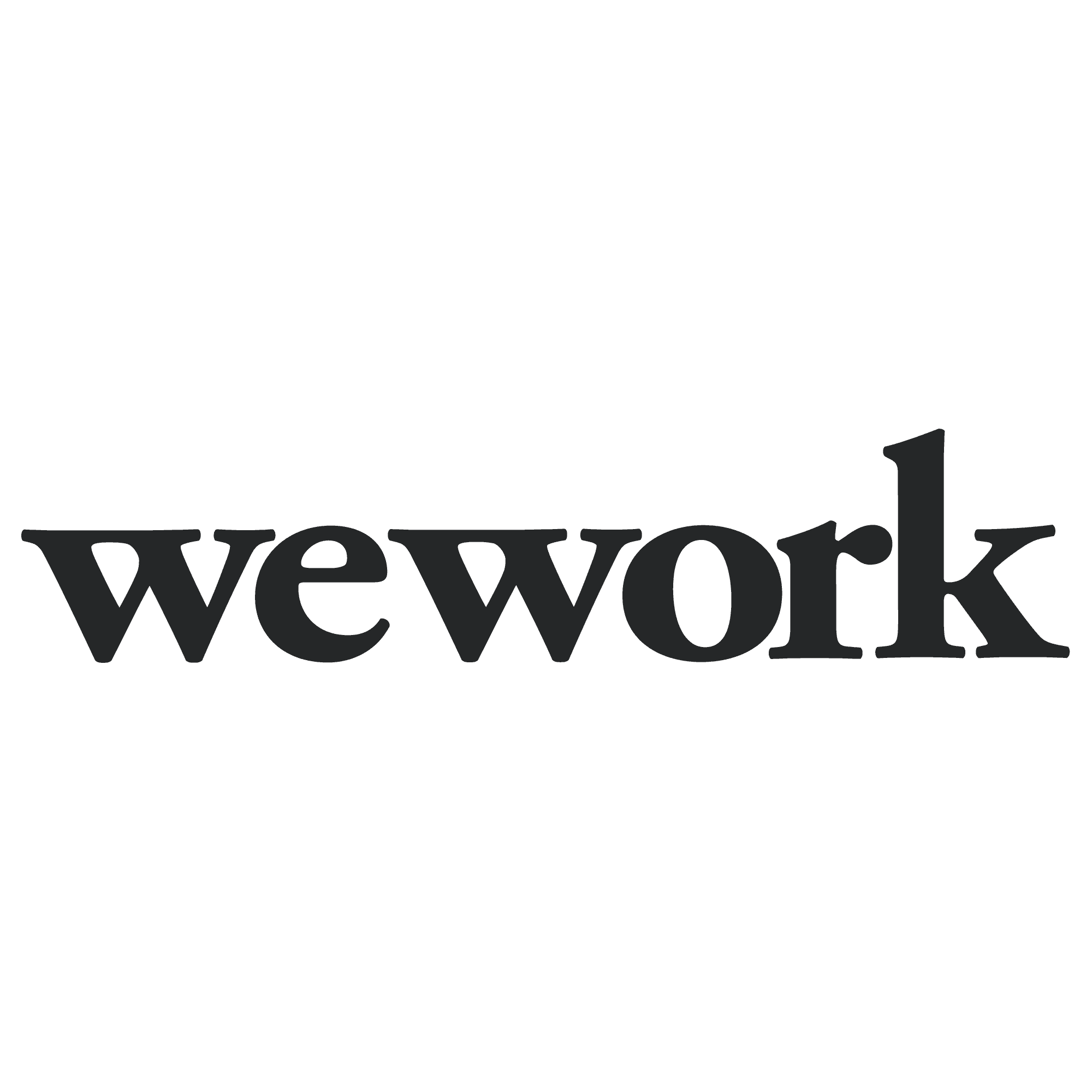Businesses have started to settle into a new way to work: hybrid. Hybrid work tries to strike a happy medium between working from the office and working from home, but it’s a difficult balancing act to get just right.
It’s not just about managing time spent in and out of the office, either. In fact, one of the most important things to balance for a successful hybrid work environment is trust. Can employers trust their employees when they’re out of the office? And can employees trust their employers to provide the tools and solutions they need to succeed while working remotely?
This report is broken down into the following sections:
Executive summary
Nearly three years after businesses shifted to operating remotely, hybrid work has become the new normal. Employees, employers, and workstyle experts broadly agree that hybrid workplace strategies add flexibility and a new sense of autonomy in the workplace.
With hybrid work, employees are often able to choose their own schedules and/or working locations. “We have a hybrid work environment that empowers leaders and teams to work together with purpose. They can decide when and where they come together to collaborate, innovate, and drive customer success,” says Salesforce.
As companies determine their own hybrid work strategy, unique to their team’s requirements, every business will need to find the right balance between the digital and physical workspace tools they use. In order to figure out what that balance might be, Dialpad and WeWork conducted a blind survey of 2,837 hybrid work employees in the U.S. to reveal how employees and employers feel about the areas hybrid work takes place in: the digital and physical workspaces.
Hybrid work requires a new level of trust between employers and employees. The survey found that while the vast majority of employees enjoy the flexibility hybrid work provides, and feel that their employers trust them to work remotely, they still struggle with certain parts of working from home (WFH), such as feeling isolated and feeling like they have to stay online for longer. Employees feel that video conferencing is essential for hybrid work collaboration but don’t feel universally positive about it.
Meanwhile, most employers feel like there is still a ways to go to make their employees’ hybrid work experiences better, such as through virtual team building events. The insights from this survey reveal where there’s room to improve and what employers can do to make their hybrid work strategies a success.
Key takeaways
1. Employees feel like their employers trust them: 87% of respondents say they believe their employers trust them to work remotely.
2. Working vacations are in: 83% of employees said they would like to take a “working vacation” if their employer provided them with access to workspaces for it.
3. Certain workplace tools may support employee wellness: 56% of hybrid workers say companies can help improve their mental health by prioritizing asynchronous communication, such as chat and email.
4. We’re still perfecting how we collaborate online: 59% say video conferencing is an important tool for collaboration, but it’s a polarizing channel. Opinions vary in how much employees like to be on video and the time spent on video calls.
5. TheC-suite is struggling: 56% of C-suite executives say they find it harder to sign off at the end of the day, and find working from home more isolating than other levels do.
What do employees think of hybrid work?
Employees want to determine their own schedules
Many studies show that employees want the flexibility that hybrid work provides. Our findings confirm that, and also find that employees don’t want to be told how to do hybrid schedules—they want to be trusted to determine that for themselves. Nearly three-quarters, 73%, of hybrid workers surveyed believe that hybrid work schedules should be decided on a case-by-case basis, by individuals, teams, or managers. Employees prefer flexibility, and the ability to work the hours that work best for them and their team, instead of having to work within the restraints of a company-wide hybrid work policy that doesn’t allow for accommodations.
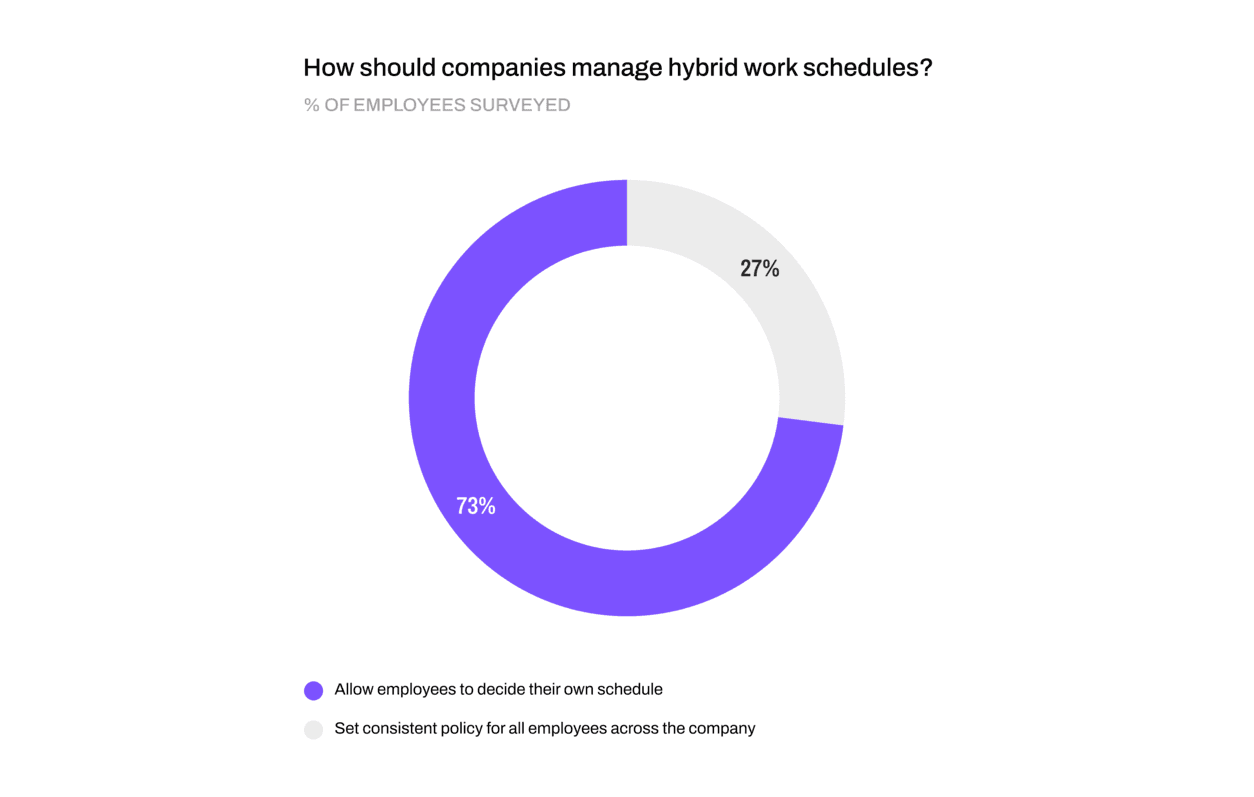
And it’s not just when they work, but also where. While employers may know that their employees prefer to design their own schedules, the survey revealed employees would also like control over where they’re working from.
The vast majority, 83%, of hybrid workers would take “working vacations,” where they can continue to work remotely while visiting a new location, if their company made shared or flexible workspaces available for them to use on those trips. Employees may prefer these types of trips because it gives them the option to visit another place without having to take personal days off. The important thing is that they have the option to work from wherever they choose at times throughout the year.
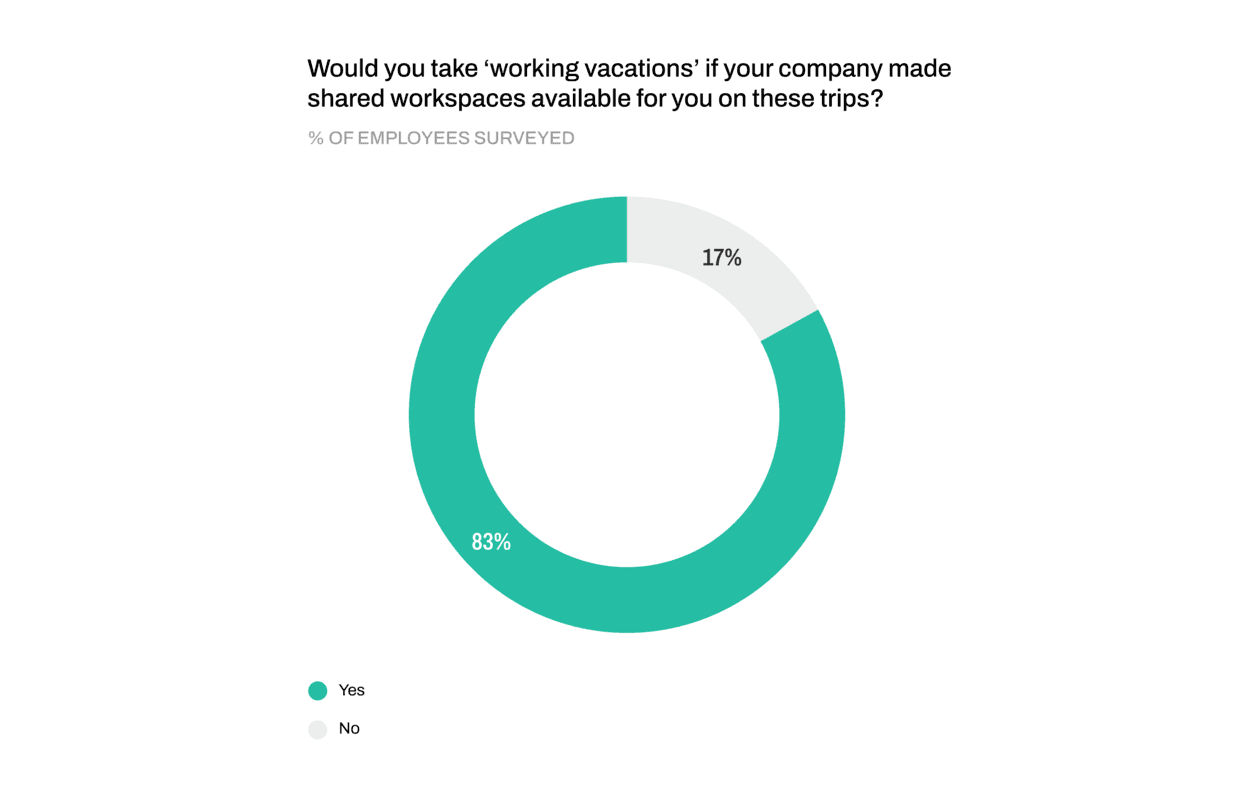
Trouble signing off
Flexible work hours may actually lead some employees to work longer hours, which in turn can lead to more burnout. In fact, our study shows that when hybrid employees work from home as opposed to the office, they say it’s harder for them to sign off at the end of the day.
More than half (54%) of hybrid workers surveyed said that “feeling that I need to be online all the time” is their biggest pain point in their digital workspaces.
Whatever the reason, it’s clear that hybrid workers feel that working from home means it’s harder to fully clock out, even when working hours are over.
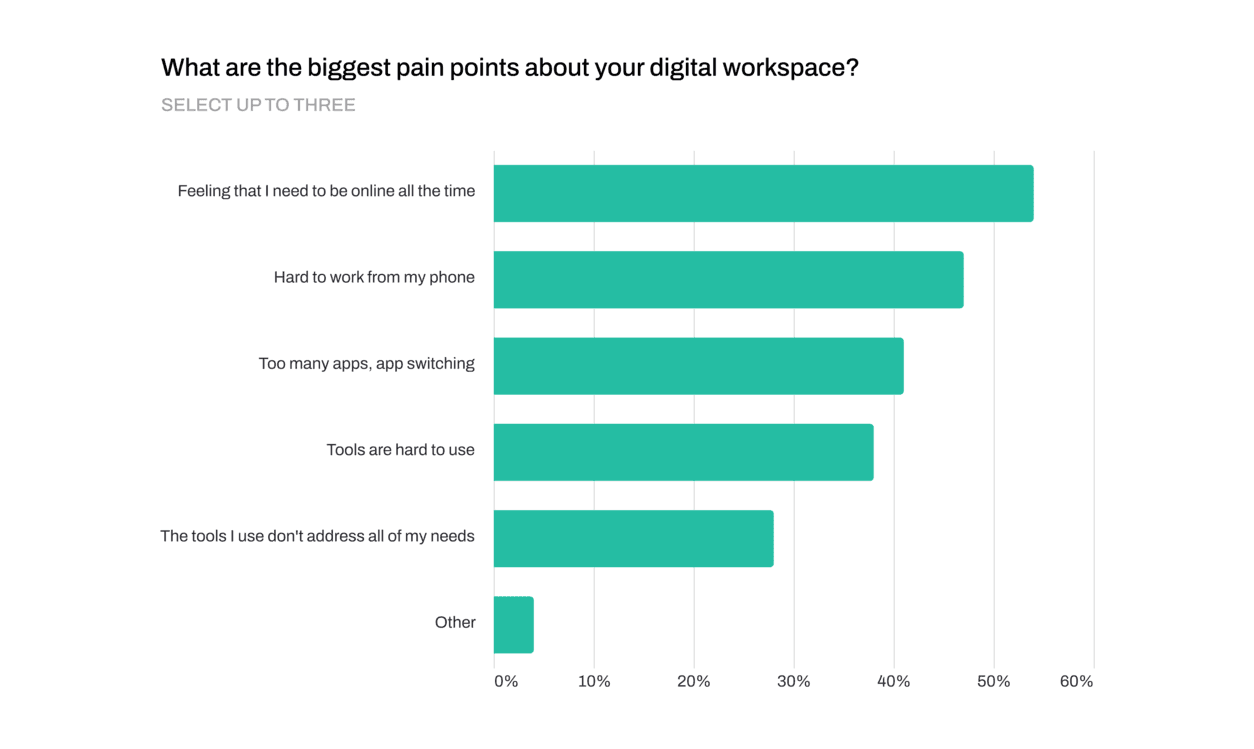
Nearly four out of 10 (38%) workers said they find it more difficult to sign off when working remotely compared to when they’re working from the office. Interestingly, geographical region has an impact on this sentiment, as over 52% of employees in mid-Atlantic cities have more difficulty signing off than those on the West Coast (at 36%). This could be due to the time zone differences, as those on the East Coast may feel the need to stay on later, in case their West Coast coworkers need to reach them.
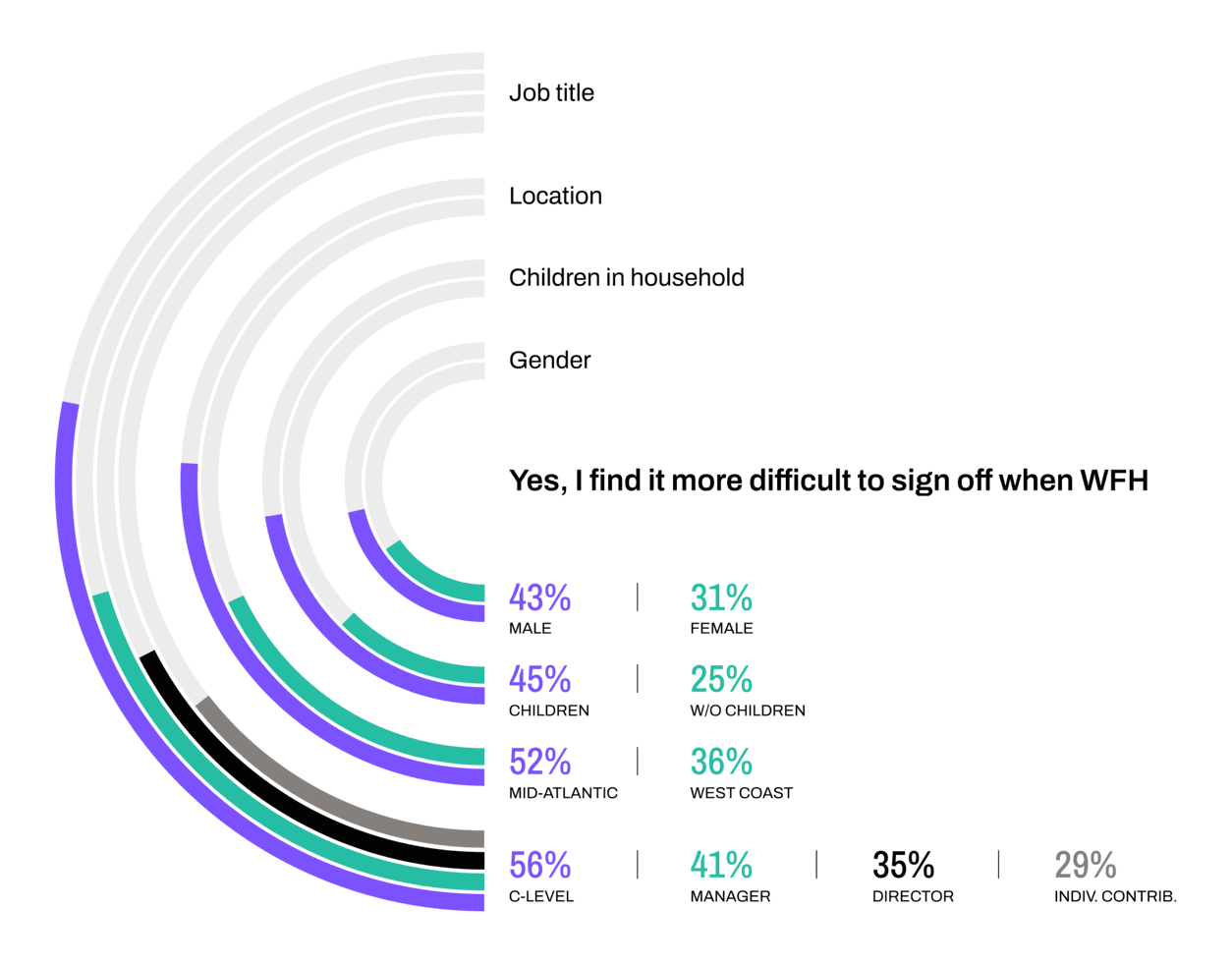
More respondents with children find it harder to sign off than those without. Survey respondents who have children in the household (45%) find it harder to sign off when working from home than those who don’t have children (25%). This is likely due to needing to split their attention between work and childcare during the day. Men also say they are much more likely to have trouble signing off (43%) compared to women (31%).
The majority of C-suite executives have difficulty switching off from work mode, with 56% saying it’s hard for them to sign off. This was the highest out of any role and level surveyed. This is likely due to the time and work demands placed on executives; working late may often be part of the job whether they’re in-office or working remotely.
Video conferencing is polarizing, but necessary
Hybrid work often means being on video conferencing. It’s essential for connecting colleagues who work in different places, including those working remotely to those in the office. The majority of employees surveyed (59%) agree that a video conferencing platform is one of the most important tools for collaborating with their coworkers. They also think that video conferencing can help colleagues feel less isolated—57% also say that companies can encourage employees to keep their video on during meetings to make them feel less isolated when working from home.
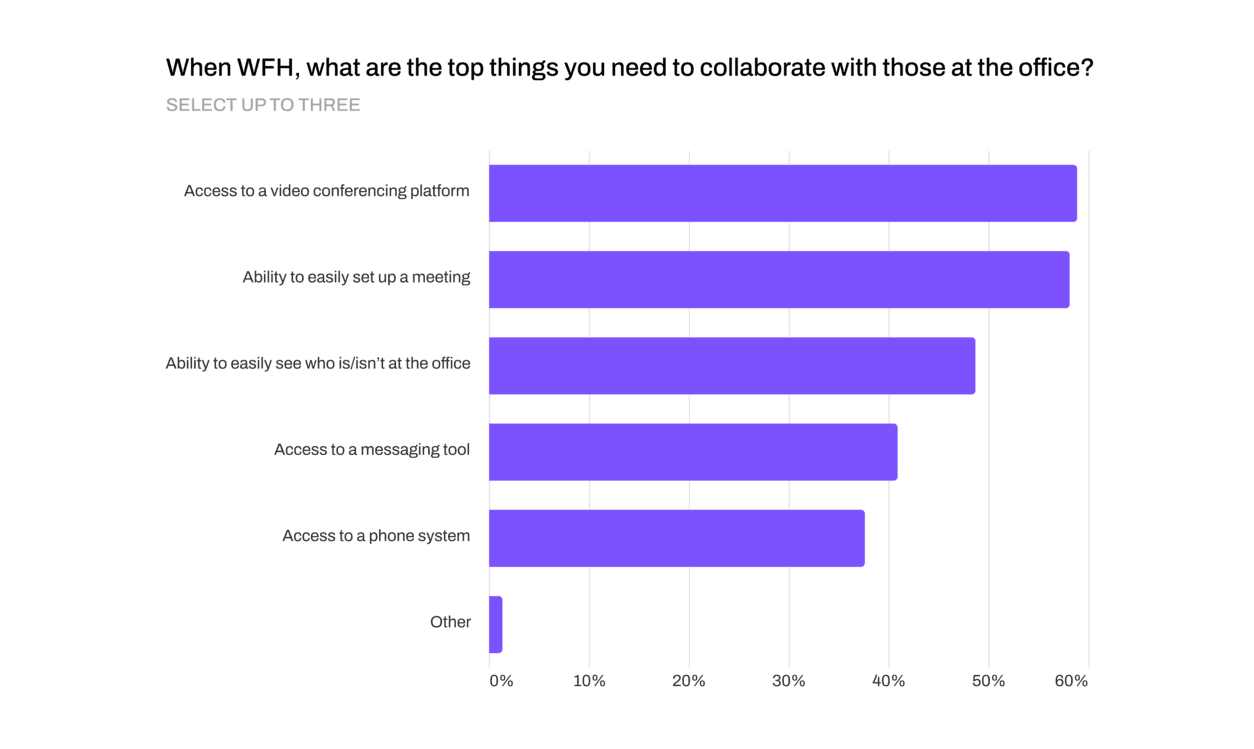
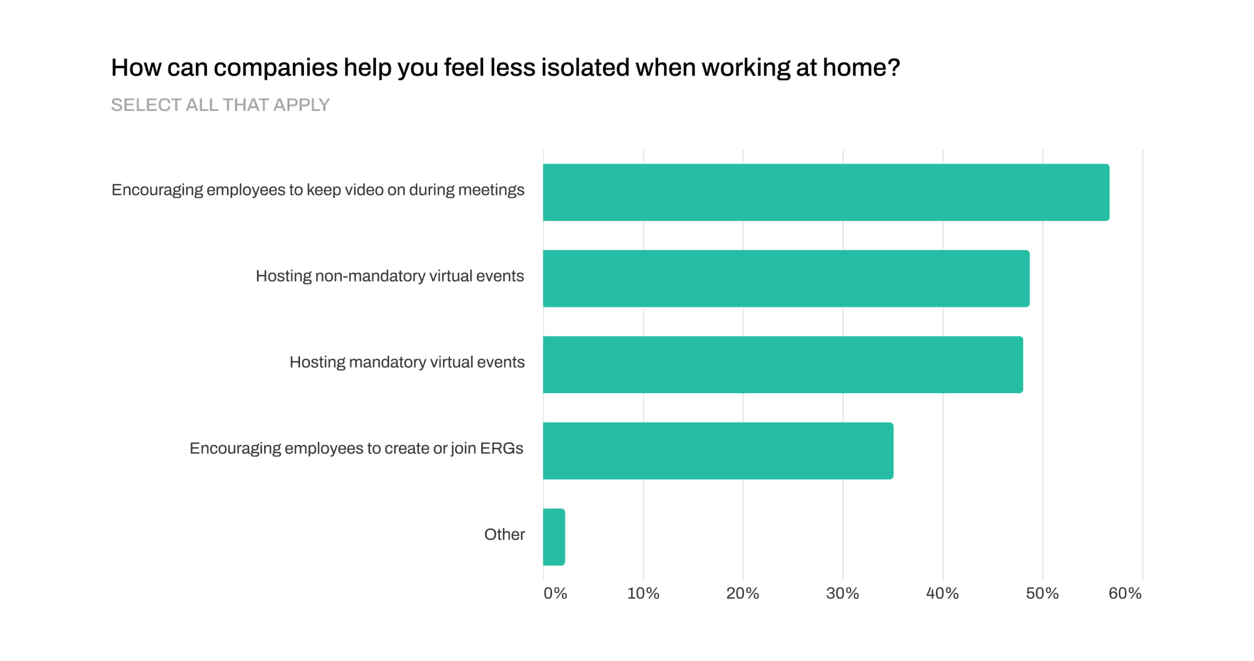
But that doesn’t mean employees have unbridled enthusiasm for video conferencing. More than half, 56%, of hybrid workers say that prioritizing asynchronous communication (such as chat and email) is beneficial to employee mental health. Communicating over chat, SMS messages, and email provides more flexibility and less of a demand to respond immediately.
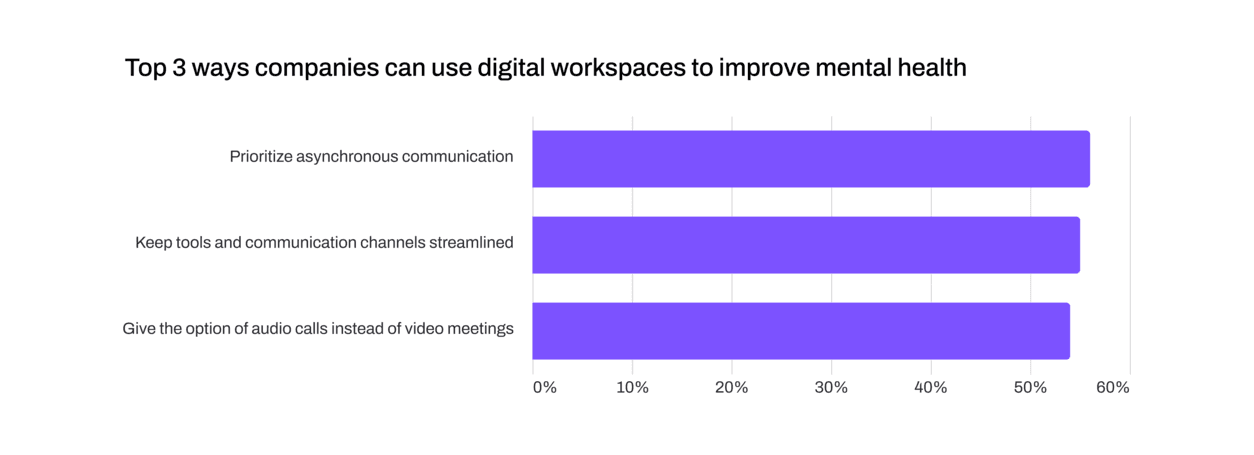
This almost seems contradictory. Employees say video conferencing is a critical tool, but also want asynchronous communication? Which one is it? It all comes back to one word: balance. Hybrid work requires more tools than just video conferencing to enable virtual face-to-face meetings without compromising the freedom to control one’s own schedule and accessibility. And while people find that seeing their colleagues’ faces helps build trust, they also don’t want to be on camera all the time. There is no one-size-fits-all solution, but having the freedom and flexibility for everyone to find the balance that works for them is important.
Want a PDF version of this report to read later?
The role of a physical workplace
A successful hybrid strategy requires having some kind of physical space for people to be able to come together in-person. That doesn’t have to be the traditional headquarters that employees spend hours commuting to; it can be a satellite office, or a shared workspace closer to their home that they can visit whenever they’d like.
Employees say the best things about going into an office is the ability to socialize (picked by 47% of respondents) and collaborate with teammates (43%). On the other hand, they say the biggest downside to going into an office is commuting (62%), followed by having less time with their family (50%).
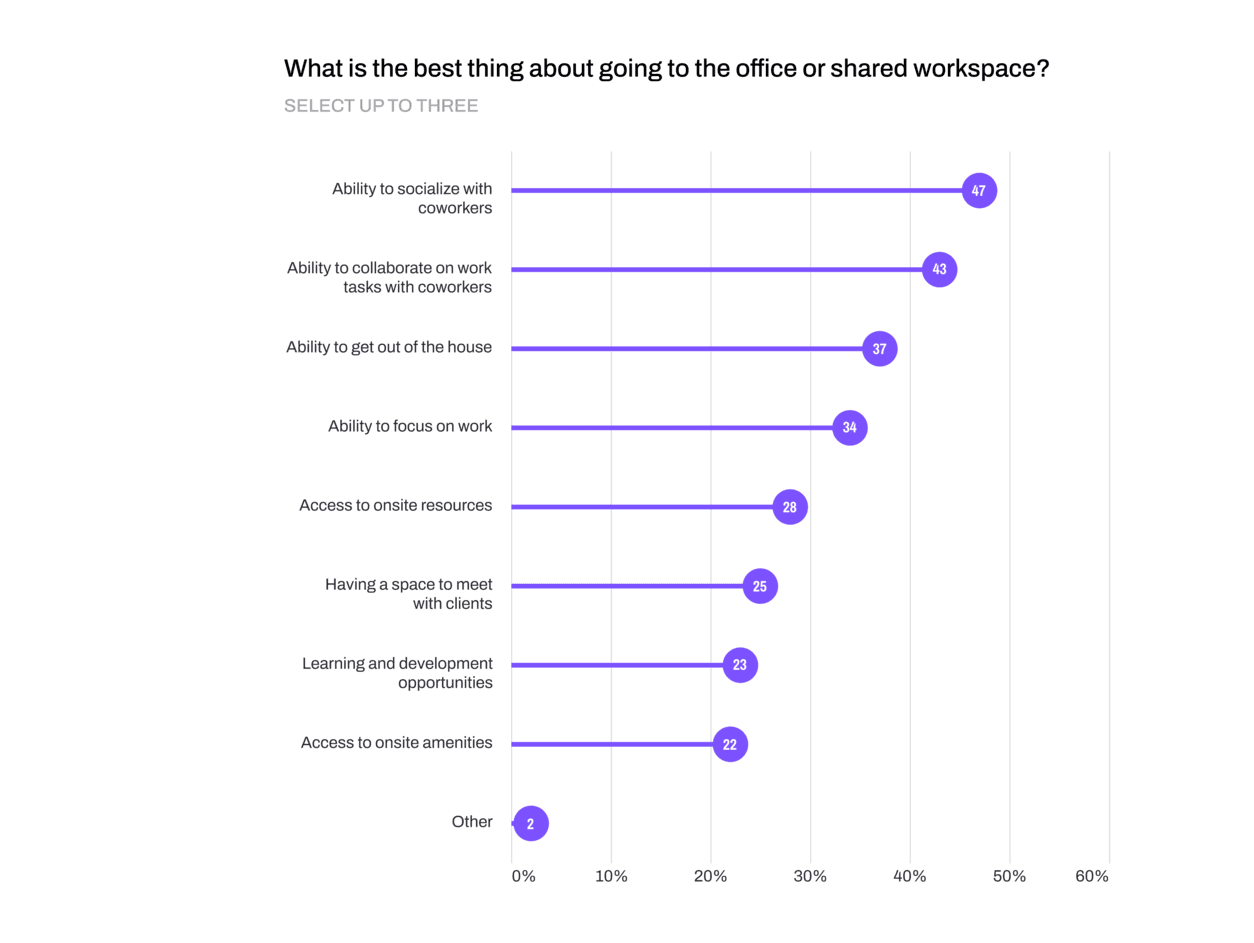
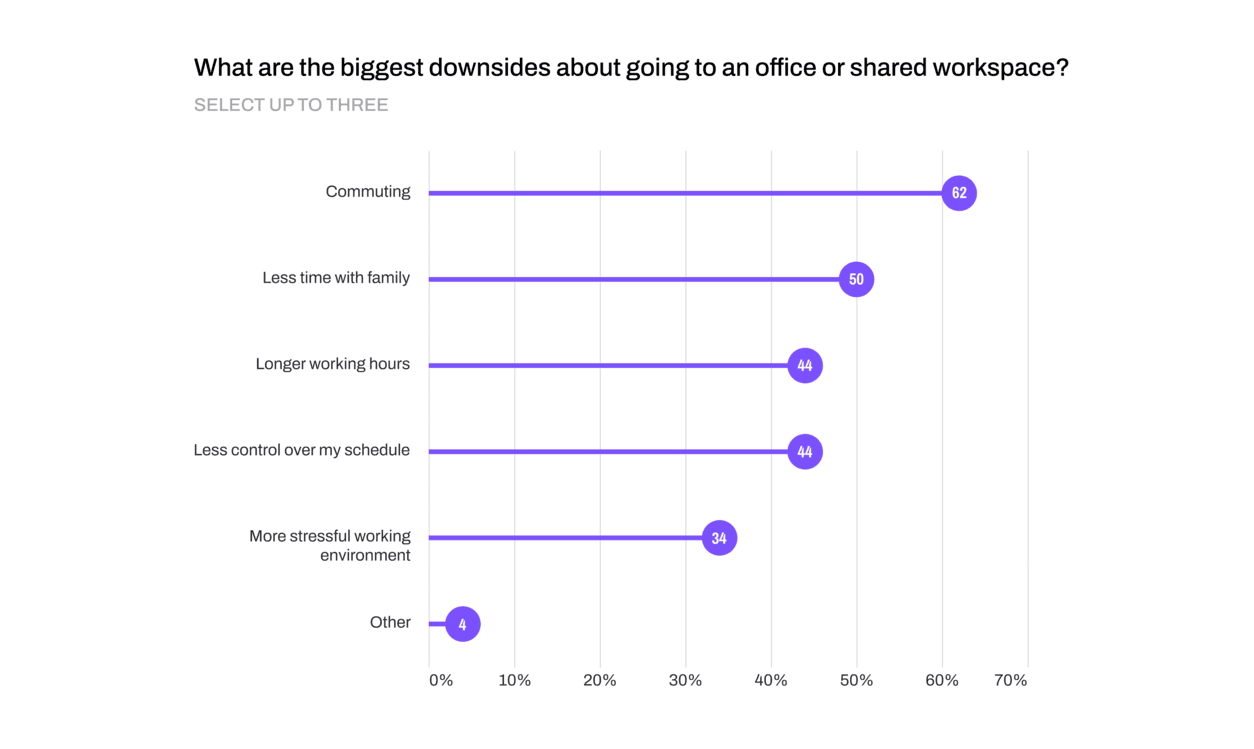
While the point about longer working hours as a downside to in office work may seem at odds with the amount of WFH employees who have difficulty signing off at the end of the day, the statistics aren't necessarily contradictory. There’s a difference between remaining online after hours in the comfort of one’s own home and staying in the office late and needing to commute home after.
These are the things employees are considering when deciding whether to work remotely or in-office. They are questioning which priorities and needs carry more weight. Is the daily commute a worthwhile trade for getting to socialize with coworkers while collaborating? That is a matter of personal choice, and the majority of respondents agree that it should be up to the individual team or manager to determine what’s preferable for their hybrid work schedules.
The C-suite is also struggling
The C-suite say that when working remotely, they have a harder time signing off at the end of the day, and also say that it’s more isolating compared to respondents at other levels.
It turns out that C-level employees are the most likely to find working from home isolating, with 72% of survey respondents saying so, compared to about 51% of respondents in other positions (i.e. director, manager, individual contributor).
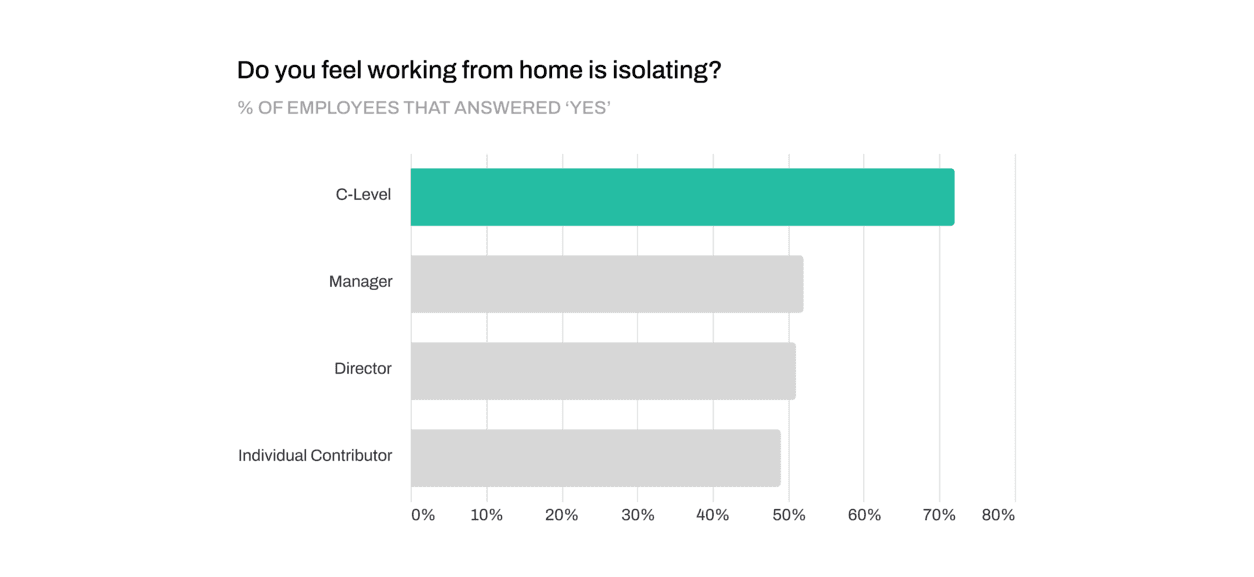
It might make sense, then, that 85% of the surveyed C-suite executives find virtual bonding activities so necessary. They provide a way to keep employees connected and add a level of socialization to remote work, even for dispersed teams. And when done right, they can boost morale and camaraderie.
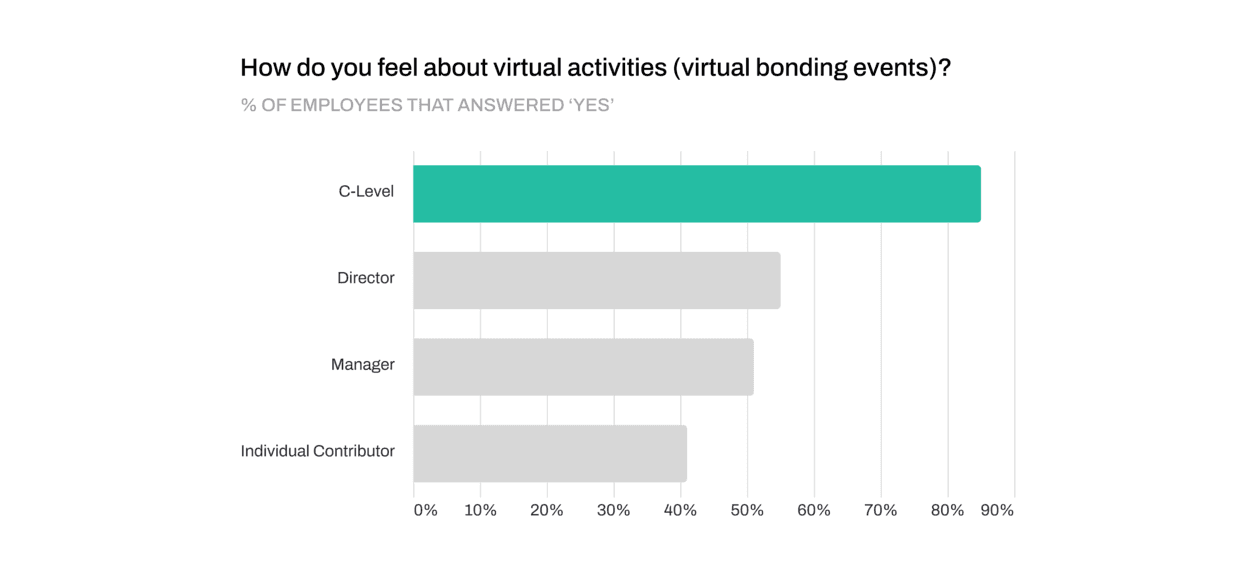
The C-suite trusts their employees
It’s also worth noting that nearly all C-suite respondents report feeling a high level of trust for their employees, as 87% of employers trust their employees to work remotely. Yet there’s also a discrepancy between the C-suite and employees. While 96% of C-Level employees feel their employers trust them to work remotely, only 82% of individual contributors feel that their employers trust them. This indicates a need for clear internal communication so that employees of every level feel the same trust and empowerment.

The expectations for trust are generally the same regardless of company size. While it might be easy to assume that smaller teams, who tend to work more closely with each other, would be more trusting than larger companies where employees might feel more disconnected from the higher-ups, that is not the case.
Moving toward a better hybrid work future
Years after the pandemic sent employees home, businesses have settled into a world where hybrid work is here to stay. But there’s still a ways to go before businesses achieve their optimal hybrid workplace strategy.
Hybrid work requires a careful balance of tools and techniques to help both employers and employees succeed. Combining flexible workplace solutions and the technology to work from anywhere are critical ingredients in the hybrid recipe.
This survey shows how nearly 3,000 U.S. hybrid work employees feel about the hybrid workplace nearly three years after they went remote. It reveals that employees enjoy the flexibility that hybrid work provides, and want to have control over their own schedules. The vast majority would take working vacations if provided with the space to do so. Yet employees still struggle with finding the right balance in their lives, and report feeling isolated and feeling like they have to stay online for longer when working from home. And while video conferencing is an essential tool, employees don’t feel universally positive about it.
While businesses are still trying to find that perfect balance for hybrid work, temporary COVID-19 work solutions have turned into long-term ones that are defining what the future of work looks like. As businesses continue to embrace hybrid work and invest in the workspace solutions they need, employees will undoubtedly benefit from the balance that a successful hybrid work strategy brings about. Organizations that have the tools, technology, and space to create a great hybrid work environment for their employees will be poised for success, no matter where their teams work.
Appendix
Here’s a snapshot of the survey’s demographics, including location, gender, and job titles:
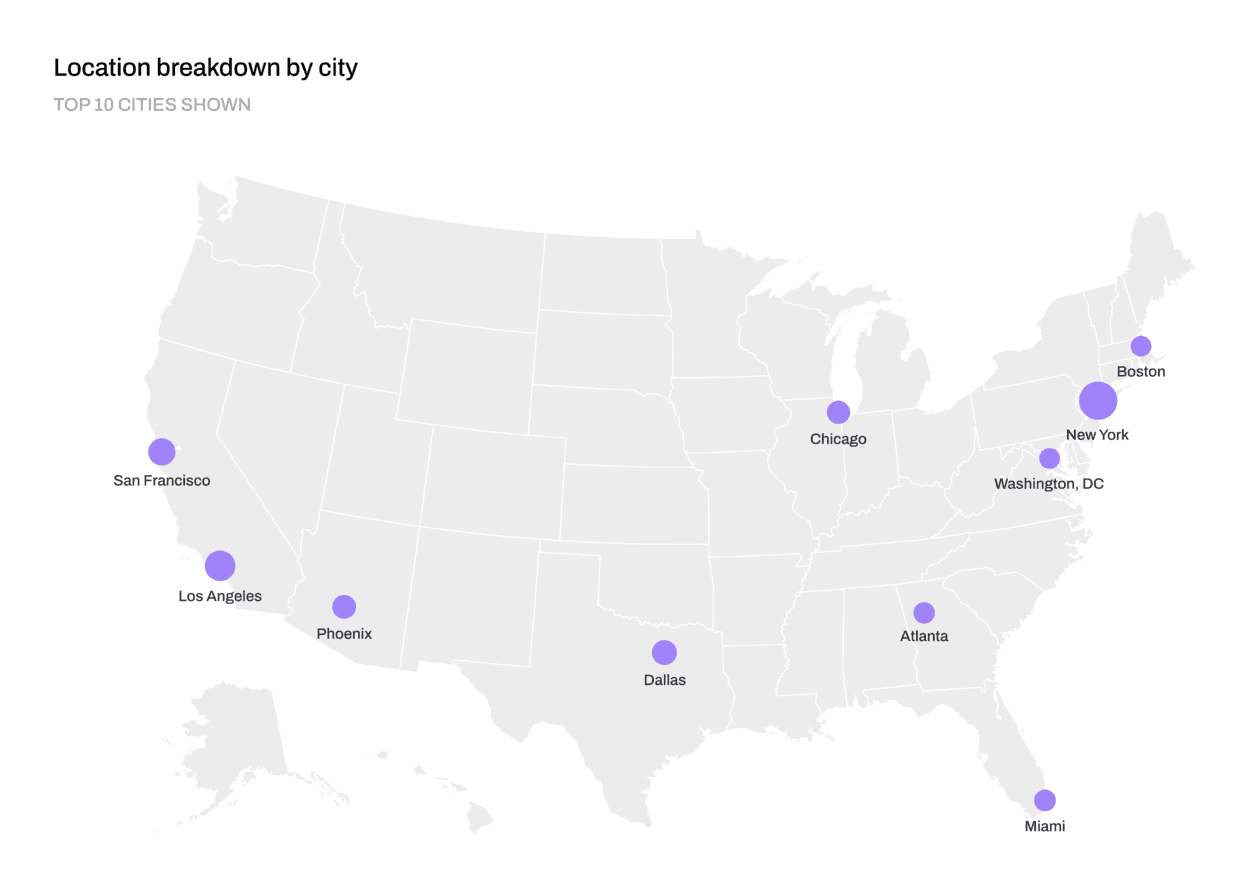

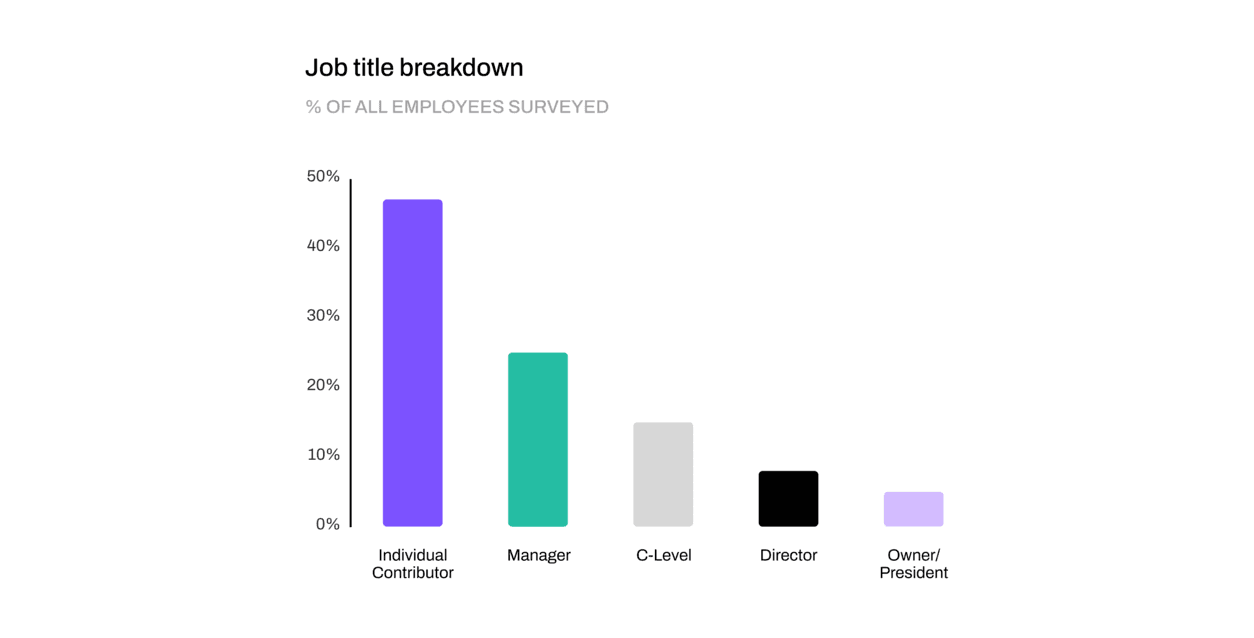
About Dialpad & WeWork
About Dialpad
Dialpad is the leading Ai-powered Customer Intelligence Platform that’s completely transforming how the world works together. We’ve designed one beautiful workspace that seamlessly combines the most advanced Dialpad Support, Dialpad Sell, Dialpad Connect and Ai Meetings with Ai Messaging. More than 30,000 innovative brands and millions of people use Dialpad to unlock productivity, collaboration, and customer satisfaction with real-time Ai insights. Visit dialpad.com to learn more.
About WeWork
WeWork Inc. (NYSE: WE) was founded in 2010 with the vision to create environments where people and companies come together and do their best work. Since then, we’ve become the leading global flexible space provider committed to delivering technology-driven turnkey solutions, flexible spaces, and community experiences. For more information about WeWork, please visit us at wework.com.


